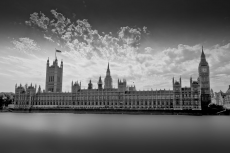
And the man who most embodied the second revolution of the state according to Micklethwait and Wooldridge was the philosopher and economist, John Stuart Mill, son of the equally philosophical James Mills. They write that:
“Mill’s overriding political concern was not how to create order out of chaos but how to ensure that the beneficiaries of order could develop their abilities to the maximum and thereby achieve happiness. He focus was on removing barriers to self-fulfilment…”
We see here that this focus is a natural progression from the thinking of Hobbes. Whilst the 17th century theorist’s ideas centred upon giving people security, Mills’s ideas focused upon giving people liberty and not be confined either socially or economically based upon their class. Britain has for hundreds of years been divided into three classes: the upper classes, who do not need to work as they live off the money earned by their property and investments (wealth leads to more wealth), the middle classes, who now mostly perform skilled service jobs and emerged after the collapse of the feudal system, and the working classes, who before the 20th century tended to do harsh manual labour. Before the 19th century, it was more or less impossible to rise up the class system through hard work – perhaps the only exception to this being the navy, through which the sixth child of a clergyman, one Horatio Nelson, managed to climb up the ranks to become an admiral who led the British navy to its greatest victory of the century.
Mill's ideas reflected and amplified the Victorian attitudes at the time. Before the Victorian era, the aristocratic families had treated the civil service as a route to easy money without doing much work, if any. Micklethwait and Wooldridge tell us a humourous tale of how “in 1784 some busybody complained that one of the two solicitors on the staff of the treasury had not turned up to work since 1744”. However, during the Victorian times it was demanded “that officeholders be chosen on the basis of merit rather than family connections”. No longer would the upper classes be able to use the civil service as a place to dump the less intelligent members of their families. Instead it would be a place where those who worked hard would be free to rise to the top of the pyramid, whilst those who were lazy would stay at the bottom.
The state also went about improving railways and roads and built the London Underground which improved freedom of movement for people. The range of people who could vote in elections was hugely expanded. At the start of the century, only “male property owners” were able to choose who represented them in the UK Parliament. By the end of the century, acts and laws which reformed the electoral system meant that by 1884 two in two in every three men had the vote (though still no women were allowed to vote). Governments during this time also started to encourage more and more free trade at home and abroad; for instance, by no longer allowing the East India Company to have a monopoly over trade in East India.
Image: By Mdbeckwith (Own work) [CC BY 3.0 (http://creativecommons.org/licenses/by/3.0)], via Wikimedia Commons

0 Comment:
Be the first one to comment on this article.